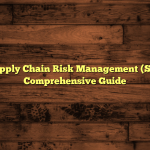Cybersecurity KPIs: Gauging Your Defenses in 2025
Table of Contents:
What Are Cybersecurity KPIs?
Why Do Cybersecurity KPIs Matter?
What Are The Top Cybersecurity KPIs for 2025?
Using Cybersecurity KPIs Effectively
Final Thoughts
FAQ
Cybersecurity KPIs: Gauging Your Defenses in 2025
Did you know that a data breach happens every 39 seconds? That staggering frequency underscores the importance of knowing how well your cybersecurity defenses are holding up. This is where cybersecurity KPIs, acting like scorecards, help you understand your security, identify weak points, furthermore get better over time.
What Are Cybersecurity KPIs?
Cybersecurity KPIs are measurable values that track how well an organization prevents, finds, but also responds to online threats. They are not just random data points – instead, they show a wider picture by focusing on the results that are important for security performance.
These indicators help you answer questions such as:
- How fast do we find a breach?
- How well does our patching process work?
- Are we lowering risks over time?
By watching these indicators regularly, you get a clear idea of your cybersecurity health. You can see where you need to improve, as well as where you are making progress.
Why Do Cybersecurity KPIs Matter?
The online threat environment is always changing. Attackers are becoming more sophisticated each year. According to recent RSA Conference reports, a high percentage of Chief Information Security Officers (CISOs) feel at a high risk for cyberattacks – which is a big increase from previous years.
In this environment, you cannot just set up defenses and hope they work. You need data insights to handle risks well. If you measure important aspects, you allocate resources wisely.
It provides:
- Data-driven insights to handle risks well
- Prioritized resources
- Continuous improvement
Cybersecurity KPIs turn abstract ideas like “security” into real numbers that you watch over time.
What Are The Top Cybersecurity KPIs for 2025?
1. Number of Security Incidents
This KPI tracks the number of security problems that occur within a timeframe. This includes breaches, malware infections, unauthorized access attempts or compromised systems.
It does:
- A rising number shows possible gaps in your defenses and detection
- A falling number suggests protection
2. Intrusion Attempts
How often do attackers try to get into your network? Tracking these intrusion attempts helps you see how much threat activity is aimed at your organization. Not all attempts succeed, frequent attempts reveal attackers are interested in you.
3. Mean Time To Detect (MTTD)
MTTD measures the average time it takes from when something happens until your team finds it. Faster detection means quicker response times – critical since finding something early limits the harm.
4. Mean Time To Respond/Recover (MTTR)
After you find an incident, MTTR measures the average time to contain it and recover from it. Shorter recovery times mean less downtime for your business, next to less time for attackers.
5. Vulnerability Management Metrics
How often are systems checked for weaknesses? What percentage of your assets are scanned? What number of vulnerabilities have been found? These highlight the risk levels. Do the mean time to remediate track the patching speed after you discover a vulnerability?
For example, if weekly scans find lots of problems, but fixing them takes a while, it shows there is a need to improve.
6. Penetration Testing Results
Pen tests are simulated attacks on your systems. They are looking for flaws before hackers do.
Important metrics include:
- The amount and severity of vulnerabilities discovered
- The time testers needed to breach systems
- The types and impact potential of flaws identified
These tests show your system resilience when it is being attacked.
7. Cost Per Incident
This KPI calculates the average financial impact of a security event, looking at response costs and also any legal fees. Understanding cost drivers helps you justify the investment in preventative training.
8. Security Awareness Training Effectiveness
Tracking the rate of employee participation, alongside success in phishing simulations, measures how ready people are. Hackers often exploit a common entry point.
Using Cybersecurity KPIs Effectively
Collecting numbers is not enough. You need context:
- Set benchmarks – What is “good” for industry standards?
- Track trends – Instead of looking at snapshots, look at changes over weeks and months.
- Prioritize action – Focus your resources where the risk is greatest.
- Communicate clearly – Use dashboards and reports so that executives understand the takeaways without technical wording.
KPIs also support compliance requirements, since regulators expect documented evidence of active monitoring.
Final Thoughts
Cybersecurity is not just about the software. It is about handling risk in a clever way, through measurement. The right KPIs give you a view of how well you are defending from growing threats, while also guiding decisions about where to spend money and how to adjust your strategy. Cyberattacks are becoming more common and complex each year. Relying only on intuition is no longer sufficient.
Data-driven approaches using the right cybersecurity metrics become essential for supporting a resilient digital environment.
In summary:
- Cybersecurity KPIs measure performance across prevention, detection, but also response
- Examples are incident counts, intrusion attempts, MTTR, vulnerability stats, cost, along with training
- Regular tracking enables constant improvements
- Clear communication makes sure that the organization is on board at all levels
Keeping an eye on these indicators will help you stay ahead without getting lost.
FAQ
What makes a KPI good?
A solid KPI is one that is easy to measure, relevant to security goals, as well as actionable.
How often should I review my KPIs?
Ideally, review them regularly, preferably monthly or quarterly.
Who should be involved in selecting and reviewing KPIs?
Security teams, IT managers, next to business leaders should participate.
Resources & References:
- https://www.sentinelone.com/cybersecurity-101/cybersecurity/cybersecurity-metrics/
- https://www.zengrc.com/blog/cybersecurity-kpis-to-track-examples/
- https://www.rsaconference.com/library/blog/decoding-cybersecurity-metrics-top-10-kpis-every-ciso-must-know
- https://www.upguard.com/blog/cybersecurity-metrics
- https://mandrytechnology.com/cybersecurity-performance-metrics/





